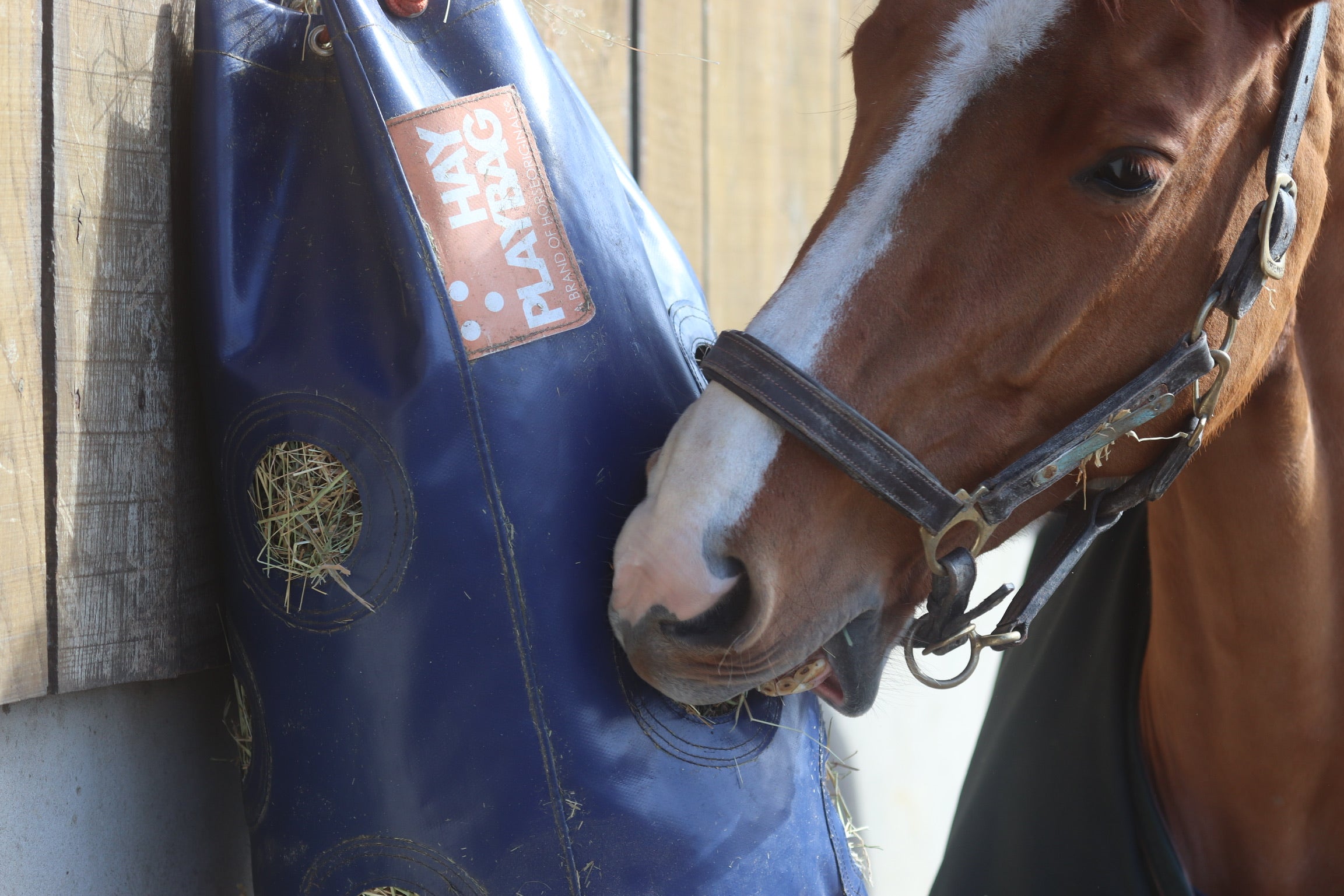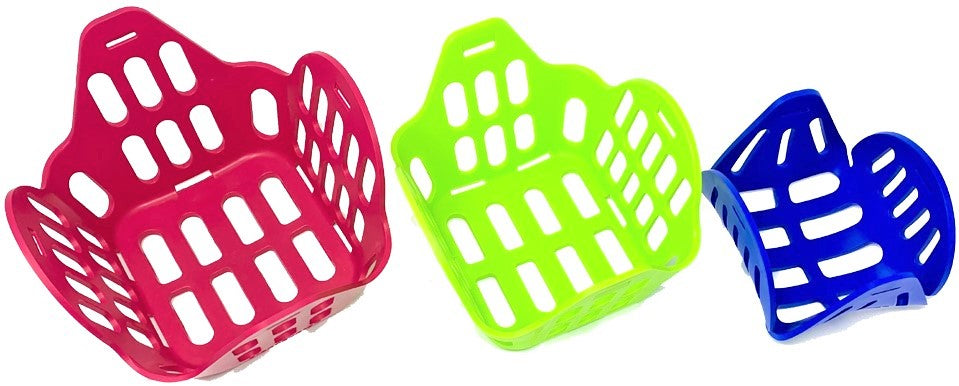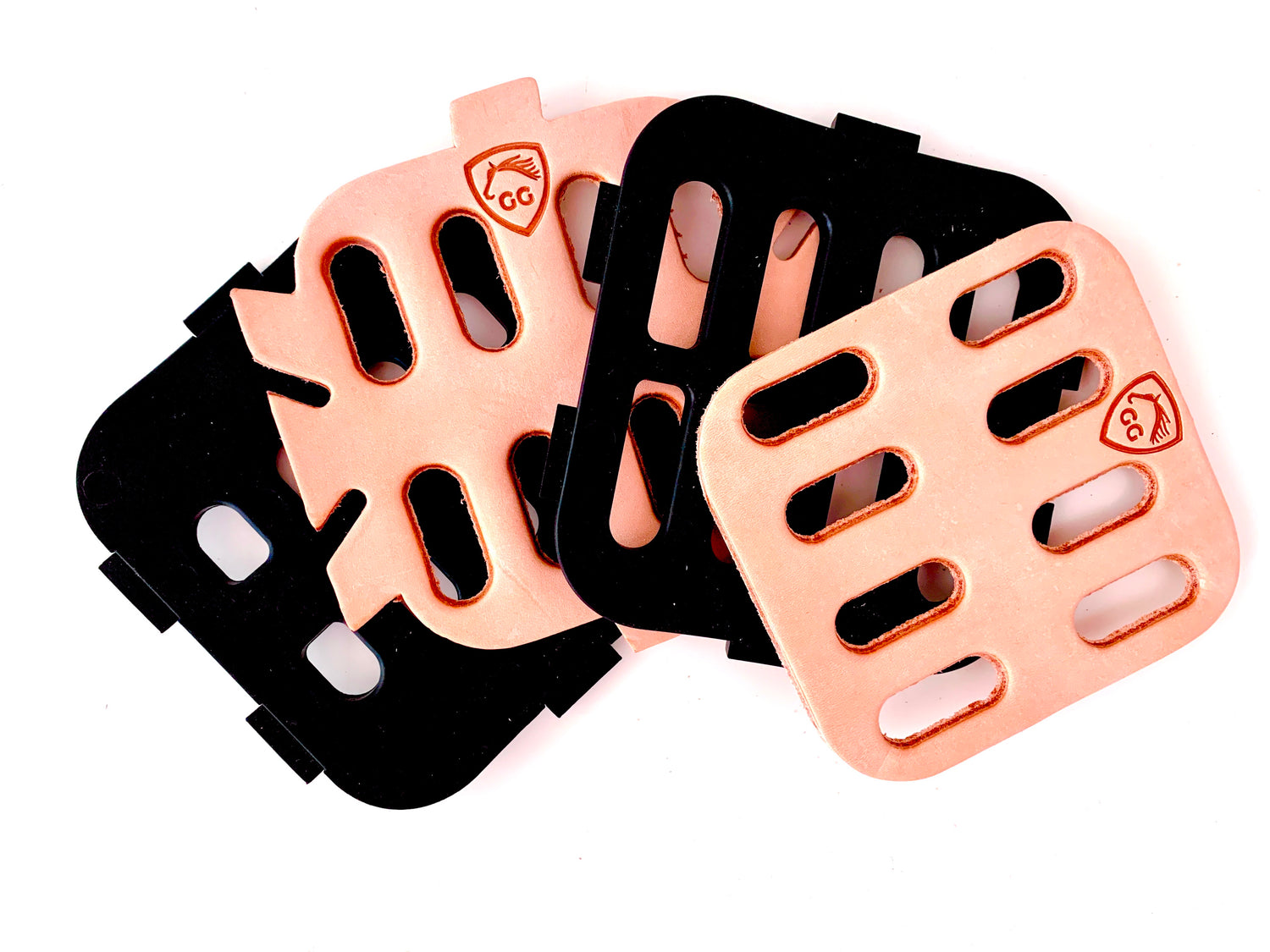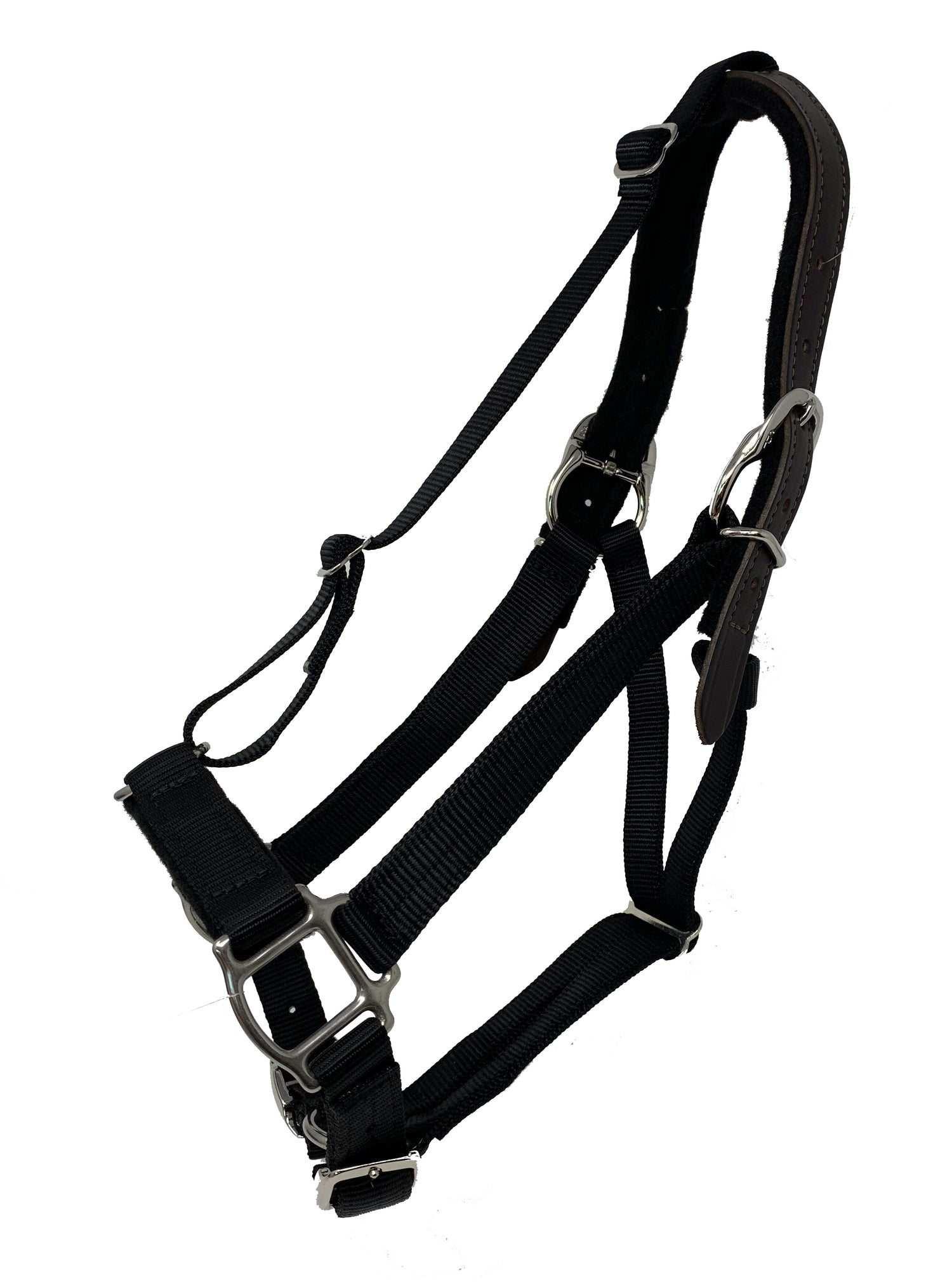A horse's body changes during the cold winter months to accommodate the colder weather. They grow a thick winter coat, pack on some pounds, and may become a tighter herd to keep each other warm. As such, their dietary needs may change, too. These changes may become more apparent as horses age, too. Older horses and hard keepers need more digestive support and calories.
Many simple and effective things accommodate your horse's changing nutritional needs in the winter – and this goes for the hard and easy keepers.

Dry lots are fantastic, and made even better when you can add slow feeders.
Why do horses need dietary adjustments in the winter?
There are a few reasons why a diet change can help your horse's health in winter, one being the effects of hormones on your horse.
Hormones
Fall and winter bring hormonal changes. As horses notice daylight diminishing, their brains tell their hormones to prepare for colder weather. They will bump up the production of hormones, like ACTH and cortisol, that stimulate their bodies to gain weight. Their caloric needs may decrease as a result.
That added cortisol also tells your horse to grow a winter coat. The summer coat will shed, and the winter coat will grow, influenced by genetics and diet. A horse missing essential nutrients may struggle to produce a sufficient coat.
Pasture availability
Horses lucky enough to have fresh pasture to munch on may be less fortunate in winter. Pasture may become dormant in colder weather depending on the climate and the type of grass. Or, the pasture is covered in snow, and horses spend too much time digging for the good stuff.
You'll need to make some dietary changes to provide the missing nutrients that the pasture once offered.

This pasture is over-grazed, and will soon be muddy.
Varying exercise and training
Many riders and horses take a break from hard work in cold weather. Riding in the cold is not always fun. The footing can be too hard, or you and your horse need a break after a busy show season.
When exercise decreases, caloric needs also decrease. You may not need to feed as much calorie-dense commercial feeds.
The cuts of hay
Many horses need more good quality hay in winter, for calories and warmth for the easy keepers, or as a substitute for pasture. The cuts of hay available will have differing nutrition. Poor quality hay, like that which is sometimes found in round bales, can often keep a horse happy and warm but may not offer the nutrients to keep an adult horse in good body condition.
The first hay cut in spring or early summer is high in fiber, but lower in protein and sugars. As the cuts continue, they become less stemmy, lower in fiber, and higher in protein and sugars. This typically means they are higher in calories and more delicious, which is excellent for winter feeding but not fantastic for horses at higher risk of laminitis and colic.
However, the lower fiber content isn't great, as fiber is critical to good gut health.
How this affects your horse
Fiber is also the fuel for hindgut fermentation that keeps your horse warm. Does your horse need more of that in the winter? Perhaps!
Knowing what hay you feed is always a good idea, as you can supplement it with more fiber. And, if your horse is metabolically compromised with pituitary pars intermediary disorder PPID (Cushing's disease), equine metabolic syndrome (EMS), or insulin resistance (IR), knowing how sugary and starchy the hay is helps you reduce the risk of laminitis and gas colic.
Speaking of colic prevention
Your horse's digestive system is delicate, and if your horse's eating habits change in winter, their gut may need some supplementation to keep things moving along.
In warmer weather, they may spend more time outside meandering around grazing on pasture or in dry lots, keeping them moving and grazing, two things that horses need.
When grazing and movement decrease or disappear, gut motility decreases, too. Keeping the gut happy and moving reduces the risk of colic.

Two cute donkeys sharing a HayPlay bag.
How to Adjust your Horse's Diet – Calories, Fiber, Nutrients, and Gut Health
Calorie needs in winter
Most of us can predict if our horses will start to plump up as the weather gets colder, but they can still surprise us! Monitoring your horse's weight as they grow their winter coats is always a good idea.
A weekly check with a weight tape can help you look for weight gain or weight loss trends. This measurement takes just a minute and can help you determine your horse's calorie needs for the cold.
If your horse is usually a hard keeper with minimal body fat, add calories with more forage, or a supplement designed for weight gain.
If your horse needs fewer calories, you still want to feed them 1.5% to 2% of their body weight in hay. You can switch to grass hay, which has fewer calories than legumes. You can also reduce calories by changing commercial feeds to supplements or a ration balancer with nutrients without so many added calories.
Read more about overweight horses here.
Adjustments in response to pasture availability
Save remaining pasture from overgrazing
Dormant grass is at risk of overgrazing, leaving the pastures muddy messes when spring rolls around. If your farm supports grazing in winter, you can help ration the pasture using grazing muzzles.
These wearable hay nets slow your horse down, which is excellent for digestion, and reduce the volume of food, which is great for dormant grass. If you can extend the availability of pasture, it will help keep them moving and active, too.

Slow feeders keep hay out of the mud.
Supplement with more hay
Sometimes, pasture is unavailable, and you need to supplement with hay. You don't have to deplete your long-stem hay reserves.
Hay pellets, hay cubes, chaff hay, and compressed hay blocks are all convenient and readily available at feed stores. Pound for pound, they are exactly the same as long-stem and take much less room to store.
As a bonus, these hay products make adding water to your horse easy! They are all best fed when soaked, reducing the chance of choke and boosting your horse's water intake.
Add supplements to balance equine nutrition
Your horse may also need some added supplements in winter to make up for late cuts of hay, less pasture, and increased calorie needs.
It's always a good idea to consider any holes that your horse's diet may develop as pasture and hay depletes and ages.
Vitamin E is a fabulous anti-oxidant that disappears from hay in about a week and is easy to supplement if pasture is unavailable or not hardy.
Selenium is a mineral found in the soil, and many horses get enough from their hay, depending on where it's grown. You may need to supplement this, too, if you live in an area like New England, where selenium is missing from the soil.
Hindgut buffers are fantastic supplements that help a horse's hindgut regulate the pH. When horses eat, the microbes in the hindgut are responsible for the fermentation of fiber and digesting sugars and starches. The microbes that love sugars and starches can go overboard and create dangerous changes to the pH of the hindgut, increasing the risk of laminitis and gas colic. These buffers help to reduce this change in pH.

Eating from a HayPlay bag will ensures that a horse eats more naturally to keep digestion slow and steady.
Overall vitamin and mineral supplements
General vitamin and mineral balancers are always a good idea to round out a forage-based diet. These can provide suitable and safe nutrients; many come with pre- and probiotics to help with gut health. When feeding horses in winter, account for their nutrient requirements as their hay and pasture change, too.
Or, use a ration balancer if the diet is now primarily hay. These bagged feeds are usually pelleted or grain-like, and provide nutrients without adding extra calories. Use a complete feed if more calories are needed, but watch out for added sugars and starches.
Adding calories with feeds
Beet pulp shreds, rice bran, and other weight gain feeds and supplements help provide enough energy for horses and add some calories.
Wheat bran is also a typical horse treat in the winter, as many horse owners believe the added fiber is beneficial. While it is a tasty treat, the average horse will not become warm from a hot water bran mash, and there is 1/3 of the fiber compared to hay.

Best Practices for Feeding Horses in Winter
Your feeding program should focus on feeding as naturally as possible. Ideally, a horse's hay intake and feed intake meet their energy demands and can provide fuel for internal body heat. This is especially important in the winter to fight boredom and keep their hindgut fermenting to create warmth.
Use a slow feeder for forage - hay bags encourage movement
Slow feeding is always the best way to go. Using nets or the more versatile hay bag helps your horse take smaller bites over extended periods.
New designs of hay bags serve a dual function – to entertain and feed. Letting horses move their food around to access the openings promotes movement and mental stimulation.
Slow feeding "meals" of grains and pellets
Commercial feeds, supplements, and other grains or pellets are best fed multiple times a day in small quantities.
An easy way is with a feeder designed for much smaller bites. Most of these are a tray or bucket with many indents to hold the food.
Another option is to use a large muck tub or trough, spread out the ration on the bottom, and then cover it with a layer of hay. This food puzzle gives your horse lots of sifting to do!
Speaking of hay, feed your commercial feeds after your horse has a belly of hay. This hay acts like a traffic jam and prevents too many sugars and concentrated food from landing in the hindgut too quickly.
Add water for hydration
A big problem in winter is a horse's hydration. Impaction colics are often the result of dehydration, and you can do a few things to help prevent this.
One is to add water to your horse's feeds. Warm water is a nice treat in winter, anyway. You could also soak your horse's hay, although you may find it frozen in terribly cold winter temperatures if you use a slow feeding system.
Tempt your horse to drink in winter by offering warm water. Horses generally prefer to drink cold water, but will drink more if it's warm.
Try adding a bit of your horse's feed to their water bucket. If you offer flavored water, also have a non-flavored option just in case they tire of your experiments.
If possible, monitor how many gallons of water they drink. Muck tubs and buckets have measurements, and many automatic watering systems can be reset daily to measure intake.
Overnight feeding
Ideally, horses have forage available 24/7, even if they only eat for about 17 hours. Overnight, this can get tricky.
Hay bags are one way to solve this dilemma, as the larger ones can hold an entire bale. Don't worry about overfeeding. When horses have free access to food, they naturally self-regulate and will slow down even more.
It's also nice to feed a little more forage overnight in the winter to help them stay warm. If your horse is a hard keeper, toss on a blanket to prevent heat loss. Blankets also help them use calories for weight gain, not metabolic heat production.
Blankets are also ideal for excessively wet weather and fighting off wind chill, which both exacerbate cold temperatures.

This HayPlay bag can hold approximately one bale of hay, which is perfect for overnights with buddies.
Pay attention to your horse's inputs and outputs
As usual, monitor your horse's eating, drinking, pooping, and peeing habits. Any changes could signal the start of something off, or even a colic.
Why does the cold change equine nutrition requirements?
A horse needs to maintain their body temperature, which requires more calories. They also need vitamins and minerals supplemented if their pasture is depleted, dormant, or snow-covered. High-quality forage and horse supplements can help.
How do you keep your horse hydrated in winter?
Always provide fresh, unfrozen water at all times. Horses will drink more warm water, and using heated or insulated buckets helps prevent freezing. You may need to feed electrolytes, too.
Many horses lose their good shape from summer as they gain weight, and others lose a certain amount of body fat. Your vet or equine nutritionist can also help you determine your horse's body condition score, how much forage they need, and what supplements or rations to add for the winter season.




















